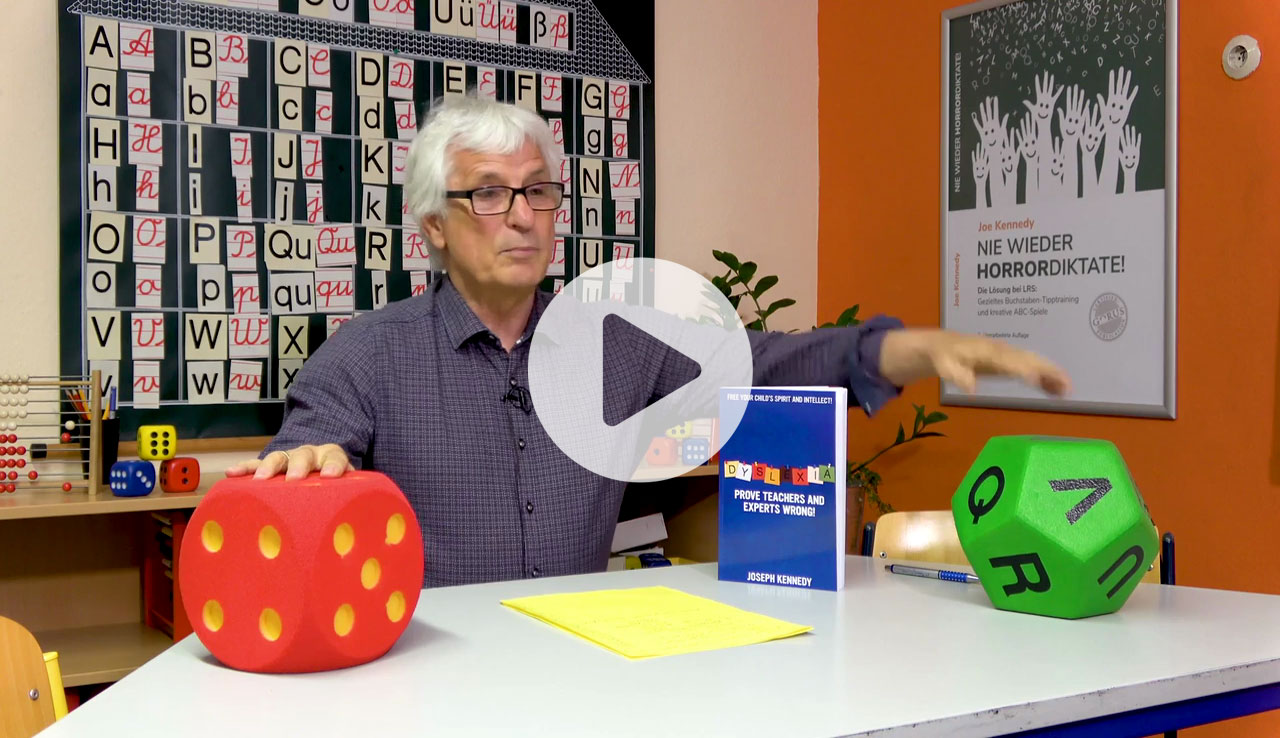The aim of an IDP is to enable the student to achieve specified goals that have been discussed and agreed upon together.
These goals should be set according to the areas in which the pupil has been underperforming. Please note: this case study is designed to show all the components of the IDP with supplementary clarifying articles.
Typically, these possibilities for improvement fall into three categories:
C1 Reading and Spelling
C2 Arithmetic
C3 Attention Deficit Hyperactive Disorder – ADHD
The fourth category is bundling the above three into a plan for measurable improvement: an IDP.
Using a case study “Ron Green 11 years old”, I will depict Ron’s difficulties and how they can be significantly alleviated when applying an IDP.
Behavioural Profile
(See pdf chapter 6. “Okay Mother, I can do it!”)
Ron is predominately a pro-active youngster who, once he has an idea in his head, he doesn’t let go of it – come what may. He is a very good soccer player and he always plays to win; he plays hard, fair and fast.
Winning is of paramount importance to Ron! He is also team captain and has let the whole school know about it. And he enjoys his status. He relishes being in the midst of attention and acclamation.
Recently, his grades have been dropping noticeably and Ron has become increasingly irritable in class and at times downright cheeky towards his teachers and showing off in doing so.
Similarly, he seems to becoming gradually more and more friendly with the kids who are already in trouble with the school authorities. Last week, Ron was involved in two fights on the playground.
Motivational Analysis 1
Self-affirmation: Ron is to 80% a “Self-Confirmer”. He sets his own goals and becomes frustrated and aggressive when he cannot achieve them; in extremis, he vents his aggression on the person he perceives of being in his way.
Social Representation: Ron is to 70% driven by the need to be held in wonder by the socio-group he feels he belongs to: the football team, his class and recently the group of kids who are in trouble with the school authorities.
Learning Profile
C1 Reading and Spelling 2,3
When asked to read in class Ron does so reluctantly and badly, he stumbles over the words and guesses their meaning. He feels humiliated. His mother says he never reads voluntarily, so she reads together with him on a regular basis. His spelling is awful…in the last test involving 20 words he typically misspelled 14. He reiterated that he had learnt the words three evenings in a row together with his mother.
C2 Arithmetic 4
Ron makes many seemingly frivolous mistakes as if he didn’t care and becomes most annoyed when these are pointed out to him, as Mrs Green has despairingly reported. He cannot do his math homework without his father’s help. Mr Green is a kindly but impatient man.
It is apparent that Ron’s arithmetical abilities are weak: he can add up fairly well, subtraction is far too slow and division is hardly possible. He even counts on his fingers.
C3 ADHD 5 – See Chapter 9 “Why is my child so inattentive?”
Attention Analysis
Ron:
- Is very easily distracted
- Fidgets constantly
- Is always on the move
- Is impulsive, exhibits explosive behaviour
- Has difficulty going to sleep (restless legs)
- Creative, has many ideas, also with Lego, is artistic
- Shows unusually high level of focus, perseverance and immersion when involved in tasks he enjoys
- Friendly, compassionate, fights to protect the weaker students
Other possible causes of poor concentration
Low blood pressure and poor blood values such as iodine and iron deficiency
IDP: Individual Development Program:
Six Measures to be taken together with the responsible teachers and parents
Ron’s negative behaviour is rooted in his desire and need to be successful and to be acclaimed. His failures in reading, spelling and arithmetic are due to learning disabilities. His negative behaviour is a reaction to these disasters.
He is most probably hyperactive and extremely likely to be affected by dyslexia and dyscalculia.
Ron needs success and recognition/acclamation; these goals can be achieved through:
- Measures to overcome his dyslexia: 40 minutes daily “play-training” with letters of the alphabet in the letter-training group. 20 minutes daily typing at home
- Measures to overcome his dyscalculia: 40 minutes daily “play-training” with counting amounts in the arithmetic-training group. 20 minutes a day playing at home
- Full test profile regarding probable ADHD with review and recommendation of implementing one of the three possible treatments (See chapter 9. “Why is my child so inattentive?”) in unison with Mr & Mrs Green
- Examination: Blood Pressure and Blood Values (for iron & iodine deficiency)
- Examination: Hearing and Eye Test (including accommodation impairment 6
- Appropriate inspiration and encouragement in accordance with Ron’s motivational drives: he needs success and acclamation
- A contract of agreement will be made listing the above measures which are agreed upon together with Ron, including corrective measures for his misbehaviour relating to:
- Self-discipline
- Perseverance
- Cooperation
- Continual assessment – a specific time and place will be appointed together with the responsible adult(s) to ascertain where and how much Ron has improved. These advances must be measurable, it is essential that the slightest improvements be recognized and communicated to Ron:
- when he’s making fewer spelling mistakes – count the decreasing number in order to give him positive feedback
- the quality of his reading ability
- the number of mistakes he has made less in math
- regular application of his ADHD procedures which have been decided upon
- using examples: the effort he is putting in to improve, also with regard to his behavioural issues
- These appointments should take place at regular intervals. Regular consultation with the parents with the goal of assessing improvements and motivating Ron to stay on the ball until he has overcome these impairments. Time frame: 12 months.

If you are interested in finding out more about how to apply these tried and tested successful pedagogical methods and tools in your school, then let’s discuss the matter. You can schedule a free consultation with me and we can see how we get on.
Sincerely

Joe Kennedy
- Chapter 6 – Okay Mother, I can do it! (Download PDF)
- Chapter 2 – A single brain region and a heap of letters (Download PDF)
Cerebral physiological aspects of the reading-writing functions (Download PDF) - Medicinal-based supportive brain maturation (Download PDF)
- Chapter 8 – Five and six are nine (Download PDF)
- Chapter 9 – Why is my child so inattentive (Download PDF)
- https://www.ivbs.org/information-in-english/
Please read the reviews of parents and experts for dyslexia here:
Please read the reviews of parents and experts for dyscalculia here:
Reviews we received from parents regarding audio-visual stimulation (AVS):
Relevant chapters in my book „Dyslexia Prove Teachers and Experts Wrong!“:
2
„A single brain region and a heap of letters“
6
„Okay Mother, I can do it!“
8
„Five and six …are nine?“
9
„Why is my child so inattentive“
Other sources:
Brain Maturation Therapy in Childhood Dr med. Fritz Held neurologist, Child Psychiatrist
Cerebral physiological aspects of the reading / writing functions and their significance for the diagnosis and therapy of dyslexia By Fritz Held.

